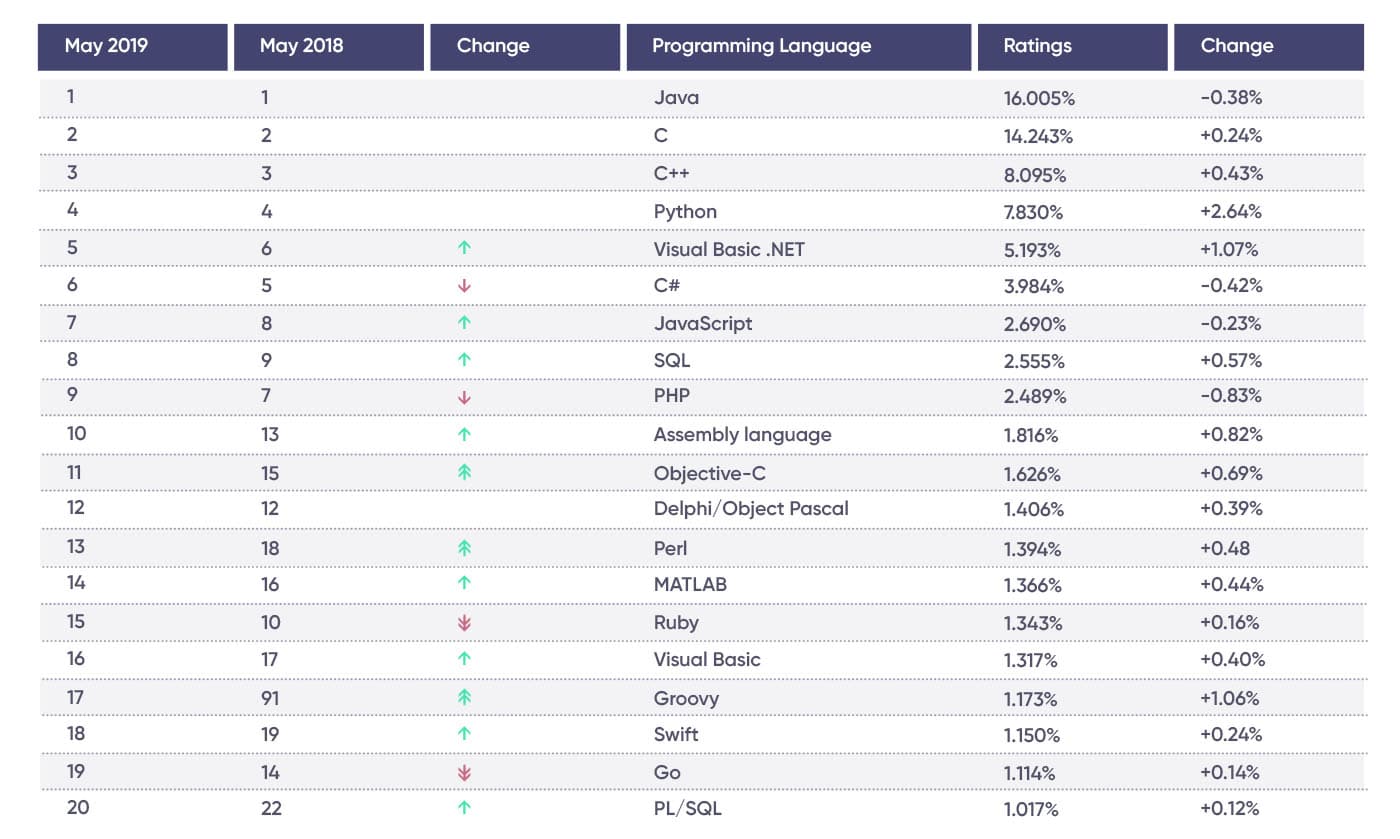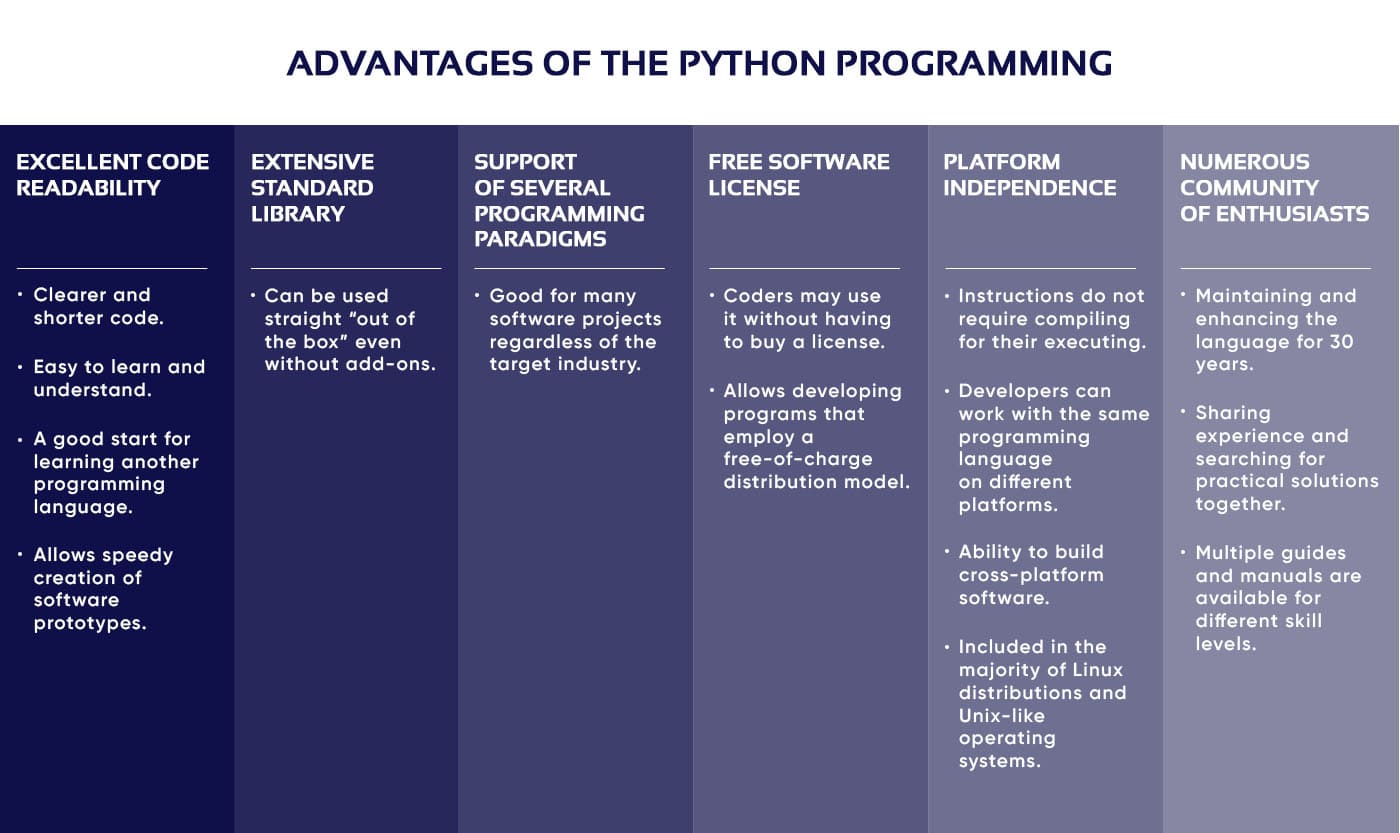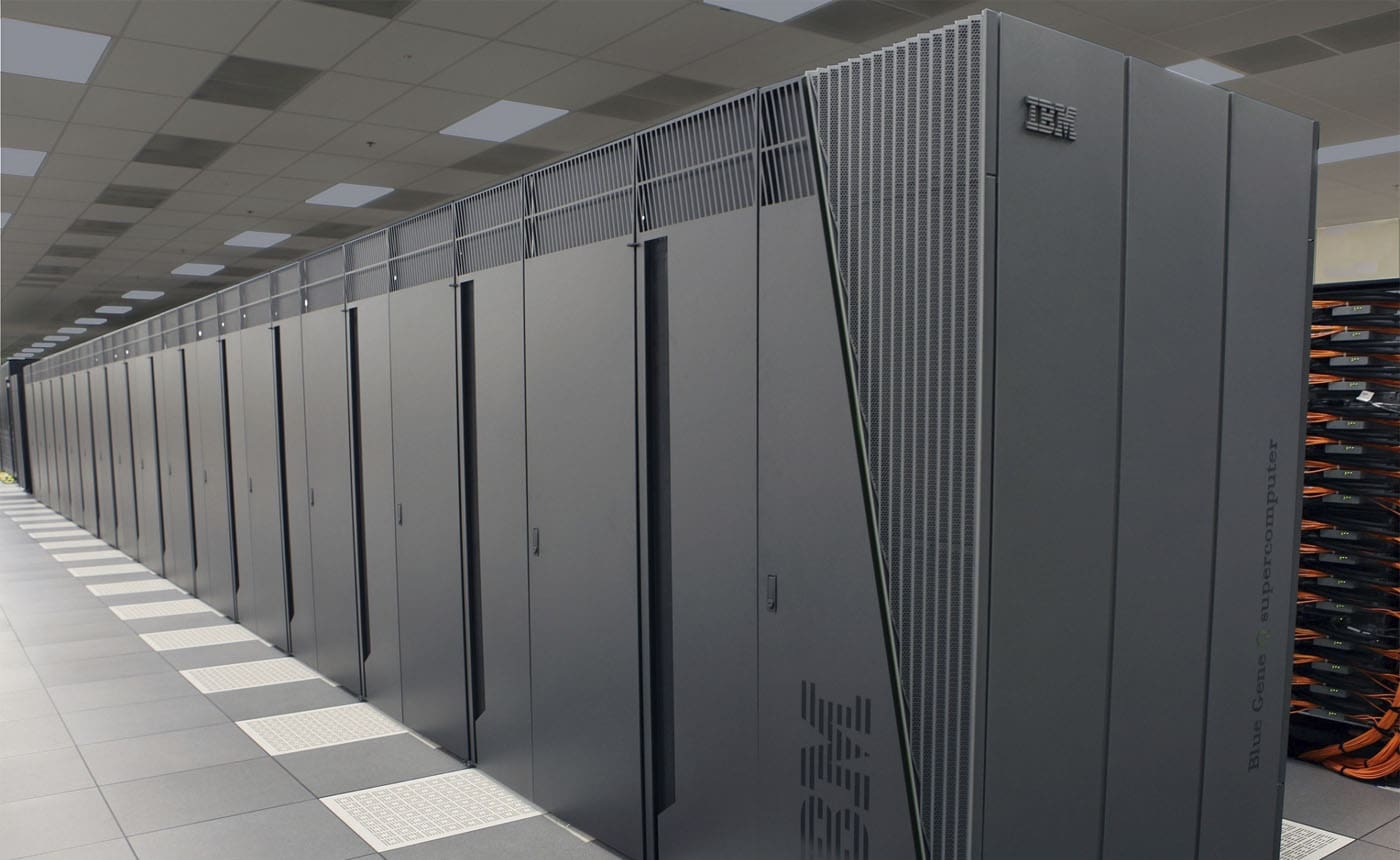In the digital era, humanity got used to the rapid development and constant changing of technologies. However, Python is the living example proving that age is not necessarily the factor in digital technologies. Despite its 30-year history, this language defies stereotypes and does not lose its popularity.
This article will help you understand the phenomenon of Python’s unique formation, its significant impact on the evolution of software development and the life of programming community during the last three decades. We will also examine the benefits of using Python for web development and learn why this programming language is good for Big Data projects.
What is Python?
In order to learn what Python is mainly used for, let’s make a proper introduction for this language, though it hardly needs one. Python appeared in 1990 and gradually evolved into an essential all-purpose tool for several generations of coders. Besides the support of multiple paradigms, and its innate extensivity, this high-level language has a number of other beneficial features, which will be described below in more details.
According to the TIOBE index, as of May 2019, Python ranks the fourth in popularity among programming languages In 2018, Stack Overflow survey placed Python on the seventh place by popularity and declared it the major programming language with the fastest growth. In order to explain these trends, this article discloses several reasons why we use the Python language and describes several exemplary Python use cases.

In addition to multiple advantages, Python also brought its own philosophy to the software development community. Those 19 truisms, collectively known as “the Zen of Python”, contain such gems as “Simple is better than complex” or “If the implementation is hard to explain, it's a bad idea.” In combination, they identify both the simplistic approach to problem-solving, as well as a somewhat jolly nature of the community and the language itself. Let us take an in-depth look and discover why Python is highly praised in the field of programming and digital technologies in general.
Advantages/Benefits of Python
You will probably agree that by the industry standards, Python is a very old technology, despite its constant evolution. Considering its age, you may ask yourself: “why use Python programming instead of modern alternatives,” or even wonder why it has not become obsolete, but, in contrast, still retains its place among the most popular programming languages. The answer lies in multiple beneficial features that make it all-round useful for software development. Let’s take a look at a brief list of several most illustrative advantages of the Python programming language.

Excellent code readability
The most distinguished feature recognized by many programmers is the simplicity of the language. The short and intuitive command line arguments create a much clearer and shorter code in comparison with C++, Java or others. In addition, it is easy to learn and understand even without previous knowledge of coding. Besides, reaching a certain skill in Python may be a good starting point for learning another programming language. In addition, the easy and short code allows speedy creation of software prototypes.
An extensive standard library
The standard library is very comprehensive and comprises many built-in modules. The included functionality makes it widely applicable to the “out of the box” principle, without third-party add-ons. However, thanks to additional frameworks and libraries, Python earned its recognition as a general-purpose language covering virtually every goal and requirement for software development.
Support of several programming paradigms
Python supports different types of programming paradigms, including functional, reflection, and object-oriented coding. That’s why Python is good for almost every software project regardless of the target industry, which is proven by multiple and extremely diverse web apps made with Python. The list of world-famous services and companies that use Python includes such giants as Youtube, Instagram, Dropbox, Spotify, Pinterest, Uber, Reddit, Netflix, and others.
Free software license
Python is compatible with the General Public License, which allows developers to use this language with GPL programs. Additionally, the Python Software Foundation License is approved by the Free Software Foundation and the Open Source Initiative. This way, coders may use this language without having to buy a license, which saves some money. It is particularly advantageous for developing programs that employ a free-of-charge distribution model.
Platform independence
Python is an interpreted language, so the instructions written on it do not require compiling in order to be executed. With the required interpreter, Python software can run on Windows, Linux, or any operating system, which enables a cross-platform advantage. Besides, Python is included in the majority of Linux distributions and Unix-like operating systems.
Numerous community of enthusiasts
The large quantity of active supporters is the main driving force for the continued improvement of Python over the last 30 years. The role of the community lies not only in maintaining and enhancing the language, but also in sharing experience and searching for practical solutions. This is particularly beneficial for novice Python developers who may easily get multiple guides and manuals, as well as specific advice on creating software with Python.
Python for Big Data Projects
Among various spheres of implementation, Big Data is perhaps the one most closely associated with Python. Regardless of industries, these Python big data projects usually cover at least one of the following activities:
- data mining,
- predictive analysis of data,
- data personalization,
- data safety.
Python and big data are a perfect match that offers its advantages to several industries reliant on big data that will be examined below. Here are a few examples of the beneficial practical results achieved by developers and end users that deal with big data using Python:
- fewer errors in the code, meaning a shorter phase of QA, thanks to the simple nature of the language;
- versatility and fast building of prototypes and ready solutions, due to the availability of comprehensive manuals and libraries, such as scikit learn for machine learning, pandas for data analysis, pyrisk for performance and risk analysis, and many others;
- wide integration possibilities with other software, thanks to the popularity of Python, and the presence of such implementations as CPython, Jython, IronPython, and so on;
- reliable performance coupled with less coding time that results from the shorter syntax of Python and allows faster problem solving.

Python in healthcare
As the healthcare industry deals with confidential data of vital importance, there are high security requirements for software development in the medical field. Though none of the programming languages used in healthcare is entirely safe, Python has its ways to deal with security threats.
Thanks to its popularity and devoted community, the vulnerabilities in Python are quickly discovered and fixed by joint efforts of professionals. Besides, there are Python-based frameworks, such as Django, that ensure built-in defense against attacks, as well as include pre-designed modules for authentication, administration and other security-related functionality.
The US regulations require that the medical software designed to handle personal health data should be HIPAA-compliant. These demands are aimed at the ways how the application stores private healthcare data. Regardless of the programming language, a software product must meet about 100 factors in a checklist to earn compliance with the Health Insurance Portability and Accountability Act. Thanks to its general-purpose nature and a wide assortment of libraries, modules, and frameworks, Python may offer several ways to implement the necessary safety standards in order to secure the electronic Protected Health Information.
Python in fintech
Fintech sets various goals and challenges for software developers in the field of financial technologies. They include handling significant amounts of data for banking systems, trading platforms, credit agencies, and other financial service providers. This sphere also implies extensive use of big data, with the focus on its secure storage, fast retrieval, and convenient management, all of which may be performed using the blockchain technology, for example. Thanks to the advantages mentioned above, Python can meet all the specific requirement for a banking programming language and provide simple yet effective solutions for data science.
Python is also considered the best programming language for financial analysis due to its speed characteristics. These refer to:
- short time needed to write code and develop a software prototype thanks to the ready-to-use data analysis libraries. This way, developers can finish projects and launch fintech startups to the market very quickly. In addition, the cost of development is reduced, because coders are usually paid by the hour;
- efficient performance of applications built on Python for data analysis and other tasks. This factor includes not only the fast responsiveness of an app but also the ability to handle large databases without lags, glitches, or crashes.

Besides, handling large amounts of data in the financial sphere involves the necessity of connecting with different banking APIs among several investment banks, for example. Here, the immense popularity and a wide array of Python implementations come in useful. Due to its inherent flexibility, Python easily combines with other scripting languages with the help of various web frameworks and programming environments, such as Django, Flask, Pyramid, Tornado, Twisted, Async.io, and many others.
Python in retail analysis
Retail is another industry that widely uses Python data analysis projects. This area implies a wide range of activities that demand effective solutions, and Python is a sturdy technology to build them.
Several goals of retail software are data collection, personalization, analysis, and machine learning that serves to establish behavior patterns of buyers and create personalized advertising suggestions. The numerous advantages of the Python language cover these functionalities mostly with the help of specialized add-ons. When it comes to machine learning projects, the most popular choices of libraries are SciPy and Scikit-Learn.
Using Python capabilities, it is possible to perform all necessary steps of machine learning:
- collect a bulk of uncategorized data;
- process collected data including its sorting, analysis, and optimization;
- choose a training model suitable for the particular case;
- create and employ a training algorithm based on one part of the processed data;
- test the created algorithm using the rest of the processed data;
- use the training model to improve the model’s predictions by correcting mistakes;
- evaluate the learning model performance based on the new input data;
- adjust the model’s parameters, and, if necessary, repeat the training cycle;
- make new predictions based on the improved patterns and new input data.
Python is able to provide support for both supervised and unsupervised learning. In addition to a high-performance approach to retail analysis, this language also provides excellent tools to visualize the information. For example, data scientists may obtain interactive visualization via charts using Matplotlib, Plotly, or ggplot. The NetworkX library allows presenting complex network structures in a clear and highly-customizable way.
Altogether, Python-based machine learning may be used by retailers for targeted advertising, loyalty programs and other strategies to improve sales, gain customers’ trust, and promote long-term relations between a brand and its clients.

What Else is Python Good For?
Judging by the advantages mentioned above, this programming language is truly versatile, and its popularity is justified. The simple and short code, the easy-to-learn programming, the wide range of libraries and frameworks for different purposes, the devoted and helpful community, the support of different platforms, and the open-source license are among the main benefits of Python.
However, the cases described above do not cover all the situations when to use Python. This article is deliberately focused on various Big Data projects in three selected industries because the full scope of Python capabilities is too big for an article format. In the future, we will definitely return to this topic using a different perspective to review other fields where this programming language is widely used, such as education, enterprise management, or transportation, etc. For now, you may look at our cases that involved Python and its various frameworks to get additional information on the subject.




